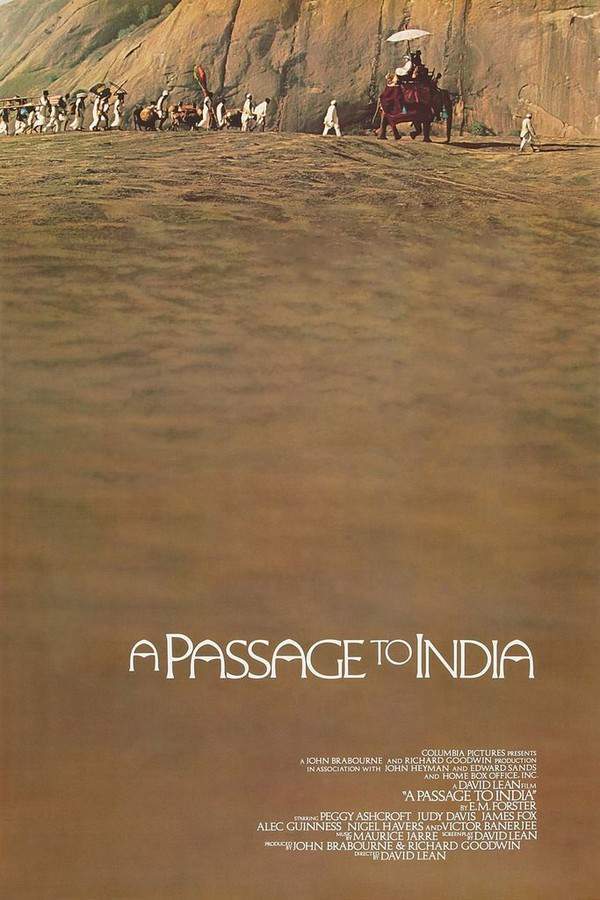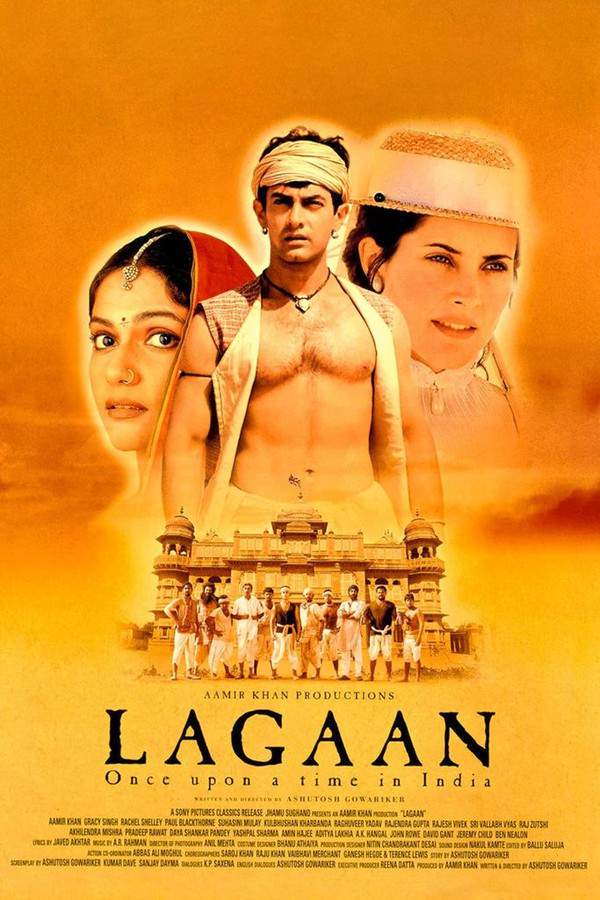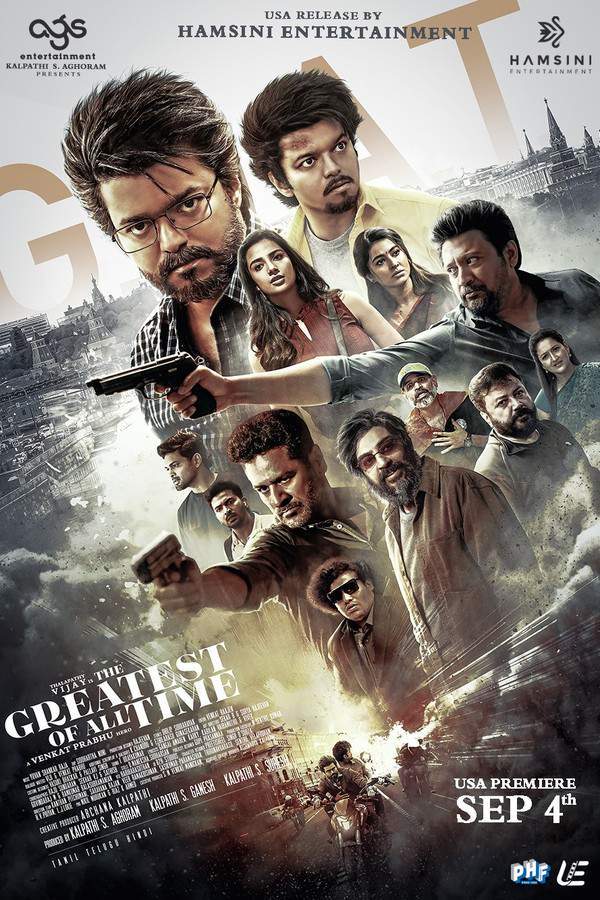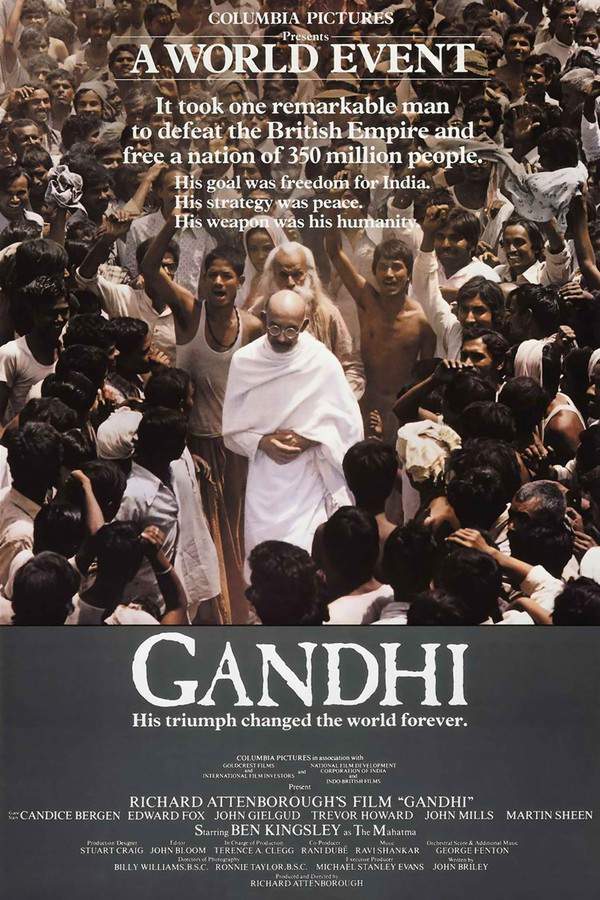
Gandhi 1983
Directed by
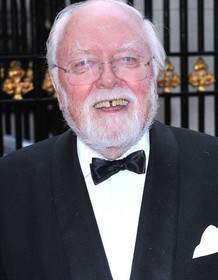
Richard Attenborough
Made by

Columbia Pictures
Test your knowledge of Gandhi with our quiz!
Gandhi Plot Summary
Read the complete plot summary and ending explained for Gandhi (1983). From turning points to emotional moments, uncover what really happened and why it matters.
On January 30, 1948, as he makes his way to an evening prayer service, the elderly Gandhi, portrayed by Ben Kingsley, receives assistance for his evening stroll. Surrounded by admirers and well-wishers, tragedy strikes when Nathuram Godse (played by Harsh Nayyar) shoots him at point-blank range. In his final moments, Gandhi utters, > “Oh, God!” before collapsing. By his side are Manu (Supriya Pathak) and Abha (Neena Gupta), witnessing the end of a remarkable life dedicated to peace. His state funeral becomes a historic event attended by millions from diverse backgrounds, as a radio reporter eloquently recounts his transformative impact on the world.
Dignitaries including Jawaharlal Nehru (Roshan Seth), Sardar Vallabhbhai Patel (Saeed Jaffrey), Maulana Azad (Virendra Razdan), and Lord Louis Mountbatten (Peter Harlowe) pay their respects during the ceremony, highlighting the significant loss felt across the nation.
The story travels back to 1893, where a young and idealistic Gandhi faces discrimination on a train in South Africa, despite holding a valid first-class ticket. There, he meets Khan (Amrish Puri), who sheds light on the grim reality facing Indians under apartheid. This experience ignites Gandhi’s commitment to advocating for rights through non-violent protest, which is met with aggression as he faces police brutality for burning discriminatory passes. With the unwavering support of Kasturba Gandhi (Rohini Hattangadi) and their three children, he begins to rally fellow Indians for their entitlements.
The narrative deepens as Reverend Charles Freer Andrews (Ian Charleson) arrives from India, where Gandhi shares his philosophies rooted in non-violence highlighted in various religious texts. During this time, Vince Walker (played by Martin Sheen), a fictional journalist from the New York Times, encounters Gandhi and documents his burgeoning movement against oppressive laws imposed by General Jan Smuts (Athol Fugard), which include invasive regulations targeting Indian citizens.
Gandhi’s movement gains momentum, drawing followers and facing considerable resistance, including opposition from his own wife, Kasturba. He establishes an ashram, a community promoting equality and religious freedom, though he faces challenges in implementing some of his ideals, such as compelling Kasturba to adhere to the ashram’s cleaning schedule.
As various protests and campaigns unfold, Gandhi’s popularity rises, leading to notable victories against oppressive laws. By 1915, he returns to India as a celebrated figure, urged by leaders like Nehru and Patel to fight for India’s independence. Tensions arise with Muhammad Ali Jinnah (Alyque Padamsee), a Congress party member seeking to alter the power dynamics.
Gandhi’s commitment to addressing grassroots issues is evident during the Champaran agitation, where he confronts the plight of farmers oppressed by the British landlords, solidifying his reputation as “Bapu,” or father, among the Indian populace.
As the Quit India movement progresses, Gandhi advocates for non-cooperation with British authorities, facing both setbacks—including violent incidents and repeated imprisonments—while the movement garners significant attention both nationally and internationally. The dramatic climax builds when Gandhi leads the Salt March, protesting the unjust salt tax imposed by the British, with international media coverage amplifying the importance of the event.
Following the conclusion of WWII, Lord Mountbatten becomes the new Viceroy of India, ultimately leading the country toward independence, albeit with the heavy cost of partition along religious lines between India and Pakistan. Opposing this division, Gandhi pleads for unity and peace, even as civil strife flares up, resulting in widespread violence and chaos.
As communal tensions escalate with one of his dissenters, Godse, plotting his assassination, Gandhi dedicates his final days to reconciling the conflict. His untimely death marks the end of an era, but his legacy endures. Following his cremation, his ashes are ceremoniously scattered in the Ganges, leaving audiences with a poignant reflection on his profound journey and the enduring message of peace he imparted to the world.
Gandhi Timeline
Follow the complete movie timeline of Gandhi (1983) with every major event in chronological order. Great for understanding complex plots and story progression.
Gandhi's Assassination
On 30 January 1948, while on his way to an evening prayer service, Gandhi is approached by a visitor named Nathuram Godse. Without warning, Godse shoots Gandhi point blank in the chest, to which Gandhi famously exclaims, 'Oh, God!' before collapsing.
Gandhi's Last Moments
In his final moments, Gandhi is surrounded by close companions, Manu and Abha, who witness his death. His passing is met with immense sorrow as millions of people gather to mourn the loss of a leader who transformed the world.
State Funeral
Gandhi's state funeral is attended by countless dignitaries including Jawaharlal Nehru and Sardar Vallabhbhai Patel. The procession highlights the profound impact of Gandhi's life, as people from all walks of life pay their respects to the man known for his non-violent approach to resistance.
Thrown Off the Train
In 1893, a 23-year-old Gandhi faces discrimination when he is forcibly removed from a South African train for sitting in a first-class compartment, despite holding a valid ticket. This incident marks a pivotal moment that ignites his commitment to fight for the rights of Indians in a segregated society.
Beginning of Non-Violent Protest
After conversing with Khan, Gandhi realizes the oppressive nature of apartheid laws against Indians. He begins a campaign of non-violent protest by burning the passes issued by the British, demonstrating his steadfast commitment to peaceful resistance even in the face of police brutality.
Establishing an Ashram
Gandhi establishes an ashram aimed at creating a utopian society devoid of caste distinctions and promoting religious freedom. However, this vision meets resistance from his wife Kasturba, illustrating the personal challenges Gandhi faces while pursuing broader social change.
Victorious Return to India
In 1915, after successfully leading the struggle for Indian rights in South Africa, Gandhi returns to India, where he is hailed as a national hero. Encouraged by leaders such as Nehru and Patel, he is drawn into the fight for India's independence from British colonial rule.
The Champaran Movement
Gandhi learns of the oppressive conditions faced by farmers in Champaran, forced to grow indigo for British landlords. Engaging with the farmers, he organizes a peaceful protest, leading to significant gains as the British government is pressured to repeal unjust laws affecting the agrarian community.
The Quit India Movement
Gandhi launches the Quit India movement in 1942, calling for an end to British rule. This campaign gathers massive public support, yet faces severe backlash and repression, culminating in Gandhi's arrest, demonstrating the high stakes of his non-violent resistance.
The Salt March
In 1930, Gandhi leads the Salt March, protesting the British salt tax by walking over 240 miles to the sea to make salt. This symbolic act of defiance not only undermines British authority but also inspires a nationwide movement for independence.
Post-War Tensions
After World War II, tensions rise regarding India's future as the British contemplate partition based on religious lines. Gandhi heavily opposes this division, advocating for unity and peace amidst growing sectarian violence between Hindus and Muslims.
Hunger Strike for Peace
In response to escalating violence during the Partition, Gandhi undertakes a hunger strike, refusing to eat until the violence ceases. His dedication to peace ultimately leads to a temporary halt in communal riots, showcasing his enduring influence as a leader.
Historical Partition
With the partition of India in 1947, communal violence erupts, leading to the largest mass migration in history. Caught in the turmoil, Gandhi's efforts to mediate and foster understanding among communities exemplify his relentless commitment to peace and harmony.
Death and Cremation
Following his assassination, Gandhi is cremated, and his ashes are scattered in the sacred Ganga River. This act symbolizes the lasting impact of his teachings on non-violence and his enduring legacy as the father of the nation.
Legacy of Peace
Even after his death, Gandhi's philosophy and methods continue to inspire movements for peace and justice worldwide. His commitment to non-violence and unity remains a guiding principle for future generations seeking social change.
Gandhi Characters
Explore all characters from Gandhi (1983). Get detailed profiles with their roles, arcs, and key relationships explained.
Mahatma Gandhi (Ben Kingsley)
Gandhi is a pacifist leader who becomes a symbol of the Indian independence movement. His philosophy of non-violence and civil disobedience influences millions and shapes the course of India's struggle for freedom. Despite facing adversity and imprisonment, he remains steadfast in his beliefs, focusing on justice and unity.
Margaret Bourke-White (Candice Bergen)
As a prominent photojournalist, Bourke-White captures the poignant moments of Gandhi's life and the Indian struggle for independence. Her interactions with Gandhi help bring international attention to the movement, highlighting the importance of media in societal change.
Jawaharlal Nehru (Roshan Seth)
Nehru is a key figure in the independence movement, serving as Gandhi's close associate and future Prime Minister of India. He plays an important role in galvanizing public support for independence and navigating the complex political landscape during and after British rule.
Kasturba Gandhi (Rohini Hattangadi)
Kasturba, Gandhi's devoted wife, represents the personal sacrifices made during the struggle for independence. She supports her husband but also faces challenges due to his relentless commitment to his ideals, demonstrating the impact of political activism on personal lives.
Gandhi Settings
Learn where and when Gandhi (1983) takes place. Explore the film’s settings, era, and how they shape the narrative.
Time period
1893, 1915-1948
The movie spans significant historical periods from the late 19th century to the mid-20th century. It begins in 1893, when Gandhi is exposed to racial injustice in South Africa, and follows through pivotal moments in India's fight for independence until Gandhi's assassination in 1948. This era includes both World Wars and the eventual partition of India, reflecting the turbulent socio-political climate of the time.
Location
South Africa, India, Amritsar, Dandi
The film primarily takes place in South Africa and India, with significant events occurring in notable locations like Amritsar and Dandi. South Africa is depicted as a country grappling with apartheid, where Gandhi first encounters systemic discrimination. India showcases a diverse landscape of struggle as it moves toward independence, with locations like Amritsar symbolizing the harsh realities faced during the freedom movement.
Gandhi Themes
Discover the main themes in Gandhi (1983). Analyze the deeper meanings, emotional layers, and social commentary behind the film.
✌️
Non-Violence
Non-violence is the central theme of the film, depicted through Gandhi's commitment to peaceful protests and civil disobedience. His belief in the power of non-violent resistance against oppression inspires millions and becomes a hallmark of his philosophy. This theme resonates through various movements depicted in the film, showcasing the struggles and sacrifices made for freedom.
🤝
Unity
The theme of unity is evident as Gandhi encourages people from different backgrounds to come together for the common cause of Indian independence. His efforts aim to transcend social divisions and foster a sense of collective identity among Indians. The film highlights how unity is essential in the face of colonial oppression and internal strife.
⚖️
Justice
Justice reflects the struggles against injustice faced by the Indian population under British rule. The film portrays Gandhi's journey in fighting for the rights of Indians in both South Africa and India, emphasizing legal and social reforms needed to achieve equality. This quest for justice serves as a driving force for Gandhi’s activism and leadership.

Coming soon on iOS and Android
The Plot Explained Mobile App
From blockbusters to hidden gems — dive into movie stories anytime, anywhere. Save your favorites, discover plots faster, and never miss a twist again.
Sign up to be the first to know when we launch. Your email stays private — always.
Gandhi Spoiler-Free Summary
Discover the spoiler-free summary of Gandhi (1983). Get a concise overview without any spoilers.
In a tumultuous era defined by imperial ambition and rising calls for self‑determination, the film paints a vivid portrait of a nation on the brink of transformation. The world feels both expansive and intimate, with bustling streets, quiet villages, and the imposing presence of colonial administration shaping daily life. A measured, reverent tone underscores every frame, inviting viewers to feel the weight of history while remaining anchored in the personal resolve of those who dare to challenge it.
At the heart of the story is Gandhi, a young lawyer whose dignity is tested by a simple act of segregation on a train in South Africa. That moment ignites an inner fire that drives him toward a philosophy of non‑violent resistance, drawn from diverse spiritual texts and a profound belief in universal humanity. He is supported—and sometimes challenged—by his steadfast partner Kasturba Gandhi, whose quiet strength anchors his more public pursuits, and by a small circle of allies who help translate his ideas into communal practice.
The narrative unfolds against the backdrop of a formidable colonial bureaucracy, embodied by officials such as Lord Irwin, whose skepticism and occasional opposition highlight the friction between entrenched power and emerging conscience. Emerging leaders like Jawaharlal Nehru and Sardar Vallabhbhai Patel hint at a broader movement that will soon coalesce around his vision. Through modest ashrams, earnest dialogues, and the quiet determination of ordinary people, the film captures the delicate balance between idealism and the harsh realities of oppression.
Visually, the film blends sweeping landscapes with intimate close‑ups, allowing the audience to sense both the enormity of the struggle and the personal sacrifices it demands. A lingering sense of hope and moral clarity pervades, suggesting that the journey of one man can echo across continents and generations, leaving an indelible imprint on the conscience of a world yearning for peace.
Can’t find your movie? Request a summary here.
Movies with Similar Twists and Themes
Uncover films that echo the narrative beats, emotional arcs, or dramatic twists of the one you're exploring. These recommendations are handpicked based on story depth, thematic resonance, and spoiler-worthy moments — perfect for fans who crave more of the same intrigue.
Featured on this page

What's After the Movie?
Not sure whether to stay after the credits? Find out!
Explore Our Movie Platform
New Movie Releases (2025)
Famous Movie Actors
Top Film Production Studios
Movie Plot Summaries & Endings
Major Movie Awards & Winners
Best Concert Films & Music Documentaries
Movie Collections and Curated Lists
© 2025 What's After the Movie. All rights reserved.


